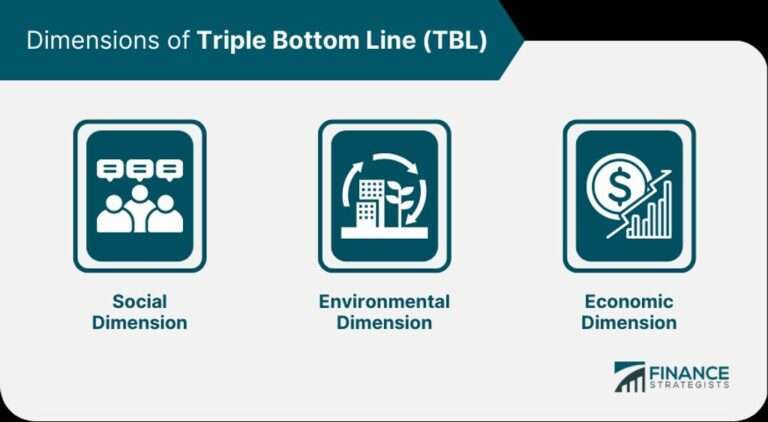Lead Generation vs Prospecting
Overview
Definition of Lead Generation
Lead generation is the process of identifying and attracting potential customers for your business. It involves capturing their interest and gathering their contact information so that you can nurture and convert them into paying customers. This is typically done through various marketing strategies such as content marketing, email marketing, and social media marketing. The goal of lead generation is to fill your sales funnel with qualified leads who are likely to be interested in your products or services. By effectively generating leads, you can increase your chances of making sales and growing your business.
Definition of Prospecting
Prospecting is the process of actively searching for potential customers or clients who may be interested in your products or services. It involves identifying and qualifying leads through various methods such as cold calling, networking, and referrals. Unlike lead generation, which focuses on attracting and capturing leads through marketing efforts, prospecting requires a more proactive approach. It requires you to reach out to individuals or businesses who have shown some level of interest or fit the criteria of your ideal customer profile. Prospecting is an essential part of the sales process as it allows you to identify and engage with potential customers who are more likely to convert into paying customers. By leveraging effective prospecting techniques, you can build meaningful relationships, uncover opportunities, and ultimately drive sales growth. To learn more about how to improve your prospecting efforts and generate high-quality leads, visit Unifire for valuable resources and expert advice.
Importance of Lead Generation and Prospecting
Lead generation and prospecting are crucial for the success of any business. Both strategies aim to identify and attract potential customers, but they differ in their approach. Lead generation focuses on generating interest and capturing contact information from individuals who have shown some level of interest in a product or service. Prospecting, on the other hand, involves actively seeking out and engaging with potential customers who may not have expressed interest yet. While lead generation and prospecting have the same goal of acquiring new customers, they require different tactics and techniques. By combining both strategies, businesses can maximize their chances of success and ensure a steady stream of qualified leads. It is important to measure the effectiveness of lead generation and prospecting efforts to optimize strategies and allocate resources effectively. To achieve the best results, businesses should consider using a combination of content marketing, email marketing, social media marketing, cold calling, networking, and referrals. By adopting a comprehensive approach and utilizing various channels, businesses can increase their reach and attract a diverse range of potential customers. To learn more about effective lead generation and prospecting strategies, consider partnering with Unifire. Unifire offers innovative tools and solutions to help businesses generate leads and engage with prospects effectively.
Lead Generation Strategies
Content Marketing
Content marketing is a key strategy in lead generation, focusing on creating and distributing valuable and relevant content to attract and engage potential customers. It involves creating blog posts, articles, videos, infographics, and other types of content that provide value to the target audience. By consistently delivering high-quality content, businesses can establish themselves as thought leaders in their industry and build trust with their audience. Content marketing is an effective way to generate leads as it allows businesses to showcase their expertise and provide solutions to the pain points of their target customers. It is an essential component of the sales process, helping businesses attract and nurture leads through valuable content.
Email Marketing
Email marketing is a highly effective lead generation strategy that involves sending targeted emails to a list of potential customers. It allows businesses to directly reach their audience and nurture leads through personalized and relevant content. With email marketing, you can segment your audience based on their preferences and behavior, ensuring that your messages are tailored to their specific needs. By using compelling subject lines, engaging content, and clear calls-to-action, you can increase the chances of converting leads into customers. Additionally, email marketing provides valuable data and analytics that can help you measure the success of your campaigns and make data-driven decisions. To optimize your email marketing efforts, consider using an email automation tool like Unifire. Unifire allows you to streamline your email campaigns, automate follow-ups, and track the performance of your emails. With Unifire, you can save time and effort while maximizing the impact of your email marketing strategy.
Social Media Marketing
Social media marketing is a powerful strategy for lead generation. With the increasing popularity of social media platforms, businesses can reach a wider audience and engage with potential leads in a more interactive way. By creating compelling and shareable content, businesses can attract and capture the attention of their target audience. Additionally, social media platforms provide valuable data and analytics that can be used to track the effectiveness of lead generation efforts. It is important for businesses to have a strong social media presence and utilize various tactics such as creating engaging posts, running targeted ads, and leveraging influencers to maximize the impact of their social media marketing campaigns.
Prospecting Techniques
Cold Calling
Cold calling is a traditional prospecting technique that involves reaching out to potential customers who have had no prior contact with your business. It requires a salesperson to make unsolicited phone calls to individuals or businesses in the hopes of generating interest and ultimately closing a sale. While cold calling can be time-consuming and often met with resistance, it can still be an effective method for reaching a large number of prospects. However, it is important to note that cold calling may not always result in immediate engagement or conversions. It requires persistence and a well-crafted pitch to capture the attention of prospects and overcome any initial objections. To improve the success rate of cold calling, it is essential to research and identify the right target audience, personalize the message, and follow up with leads. By incorporating cold calling into your prospecting strategy, you can expand your reach and potentially uncover new opportunities for business growth.
Networking
Networking is a crucial prospecting technique that involves building relationships and connections with potential clients or industry professionals. It allows you to expand your network and gain valuable insights and opportunities. However, networking can sometimes be challenging and time-consuming. It requires patience, persistence, and the ability to navigate through different social settings. Despite the frustration that may arise from rejection or unsuccessful interactions, networking remains an effective way to establish trust, generate leads, and explore new business ventures. By attending industry events, joining professional organizations, and leveraging online platforms, you can enhance your networking skills and make meaningful connections that can lead to long-term business partnerships. If you’re looking to improve your networking abilities, consider attending networking workshops or seeking guidance from experienced professionals in your field. Remember, the key to successful networking is to approach it with a genuine interest in others and a willingness to provide value.
Referrals
Referrals are a powerful prospecting technique that can greatly enhance your lead generation efforts. When someone refers your business to their network, it is a strong indication of trust and credibility. Prospecting through referrals allows you to tap into the existing relationships of your satisfied customers or clients, increasing the likelihood of connecting with qualified leads. By leveraging the power of word-of-mouth marketing, you can expand your reach and attract new prospects who are more likely to convert into customers. To effectively utilize referrals, make sure to provide exceptional customer service and consistently deliver value to your existing customers. Encourage them to refer your business by offering incentives or rewards. Additionally, establish a system for tracking and following up on referrals to ensure that no opportunity is missed. By incorporating referrals into your prospecting strategy, you can maximize your lead generation efforts and achieve greater success.
Conclusion
Choosing the Right Approach
After exploring the definitions and importance of lead generation and prospecting, it is crucial to choose the right approach for your business. Lead generation focuses on attracting and capturing potential customers through various strategies such as content marketing, email marketing, and social media marketing. On the other hand, prospecting involves actively reaching out to potential customers through techniques like cold calling, networking, and referrals. To make an informed decision, consider your target audience, resources, and goals. It is also important to note that a combination of lead generation and prospecting can be highly effective in maximizing your reach and generating quality leads. Measure the success of your approach by tracking metrics such as conversion rates and customer acquisition cost. By choosing the right approach, you can optimize your lead generation and prospecting efforts and drive sustainable business growth.
Combining Lead Generation and Prospecting
Combining lead generation and prospecting is essential for a successful sales strategy. Lead generation focuses on attracting and capturing potential customers, while prospecting involves actively reaching out to and qualifying leads. By combining these two approaches, you can maximize your chances of converting leads into customers. One way to do this is by using the leads generated through marketing efforts as a starting point for prospecting. This allows you to target specific individuals who have already shown interest in your products or services. Additionally, prospecting can help identify new leads that may not have been captured through lead generation efforts. By utilizing both strategies, you can create a more comprehensive and effective sales pipeline. It is important to regularly evaluate and adjust your approach to find the right balance between lead generation and prospecting. By measuring the success of your efforts and making data-driven decisions, you can optimize your sales process and achieve better results. Unifire can help you streamline your lead generation and prospecting efforts with its advanced tools and features. Visit Unifire to learn more and start boosting your sales today!
Measuring Success
Measuring the success of your lead generation and prospecting efforts is crucial to understanding the effectiveness of your strategies. There are several key metrics you can use to track and evaluate your success. Conversion rate is an important metric that measures the percentage of leads or prospects that convert into paying customers. Return on investment (ROI) is another crucial metric that helps you determine the profitability of your lead generation and prospecting activities. By calculating the cost of acquiring a lead or prospect and comparing it to the revenue generated, you can assess the effectiveness of your strategies. Additionally, lead quality is an important factor to consider when measuring success. Evaluating the quality of your leads and prospects can help you identify areas for improvement and optimize your strategies. To ensure accurate measurement, it is important to establish clear goals and define what success looks like for your business. By regularly monitoring and analyzing these metrics, you can make data-driven decisions and continually refine your lead generation and prospecting efforts.
If you’re looking to supercharge your lead generation and prospecting efforts, consider using Unifire. Unifire is a powerful lead generation and prospecting tool that can help you streamline your processes, track your metrics, and optimize your strategies. With Unifire, you can easily manage your leads, automate your outreach, and track the effectiveness of your campaigns. Take your lead generation and prospecting to the next level with Unifire!
How to Measure Success in Lead Generation and Prospecting:
- Set clear goals and define what success means for your business.
- Track and analyze key metrics such as conversion rate, ROI, and lead quality.
- Regularly review and optimize your strategies based on the data.
- Utilize tools like Unifire to streamline your processes and track your metrics.
- Continually test and iterate on your lead generation and prospecting efforts to improve results.
In conclusion, Unifire is the ultimate tool for extracting summaries, keywords, and titles from your podcast and repurposing your content. With Unifire, you can save time and effort by automating the process of extracting valuable information from your podcast episodes. Whether you’re a content creator, marketer, or podcaster, Unifire can help you maximize the reach and impact of your content. Try Unifire today and unlock the full potential of your podcast!






